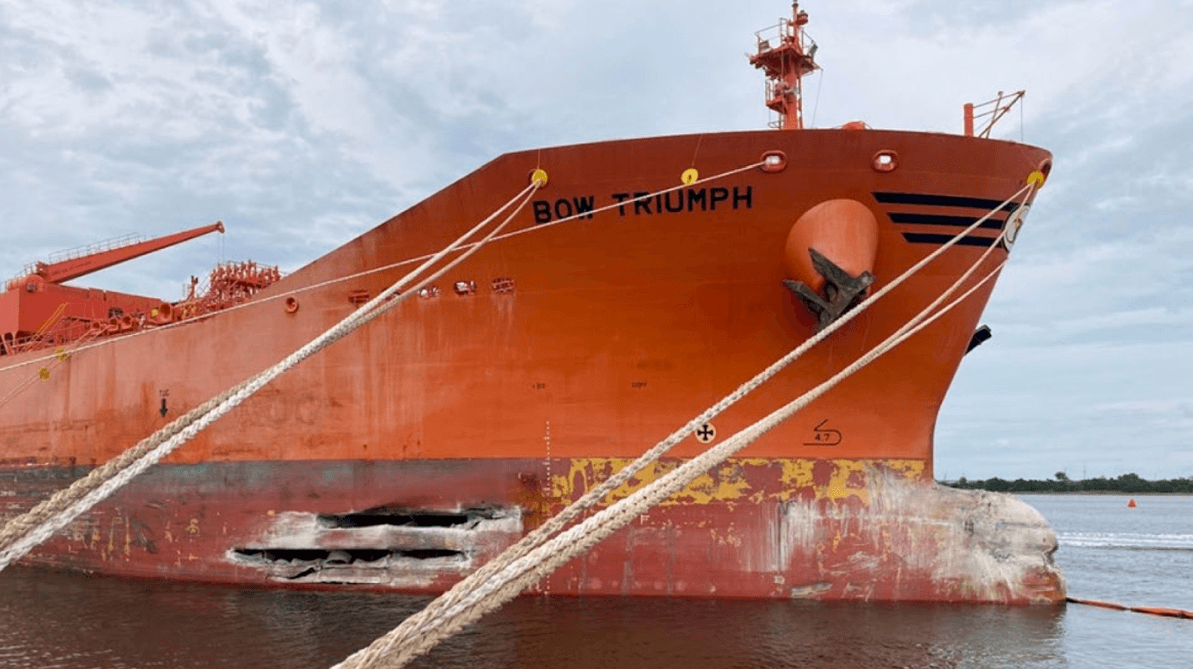There are no comments on this post yet
Against the Rush of Water: the Battle Against Hull Damage

When we picture a ship at sea, we imagine a solid, invincible giant slicing through the waves. But even the most advanced vessels aren’t immune to hull breaches. Whether it’s a rusty seam, an unexpected collision, or a design flaw, when water starts rushing in, the crew has only moments to react. Let’s dive into why these incidents happen, what tools are used today, and how professionals (and sometimes even improvised tricks) can save a vessel from disaster.
Why Do Hull Breaches Happen? ⚠️
There’s no single cause of water ingress. Hull damage can occur suddenly or slowly, but the result is always dangerous. Common scenarios include:
Corrosion & Wear – Rust is a ship’s silent enemy. Over time, ballast tanks and steel plates can weaken until seawater finds its way in.
Collisions & Groundings – Striking another vessel, a rock, or even thick sea ice can tear open the hull.
Equipment Failures – Defective valves, worn-out through-hull fittings, or leaky hatches may let water into compartments.
Structural Stress – Vibrations, heavy loads, and metal fatigue can create cracks.
Human Error – Perhaps the most tragic case: the Herald of Free Enterprise ferry in 1987 capsized after its bow doors were left open, allowing water to flood the car deck in seconds.
Underwater Repair Technology 🤿
New solutions allow ships to keep operating safely even after serious breaches.
Shoring: Reinforcing the Patch 💪
Stopping the flow of water with a patch is only half the battle. The real challenge is holding that patch in place against the crushing pressure of the sea. That’s where shoring comes in.
Shoring means bracing the damaged area from the inside with strong supports – usually wooden beams or metal struts. These “shores” press firmly against the patch, preventing it from shifting, collapsing, or being forced back into the ship by water pressure.
Damage-control teams use different configurations depending on the size and angle of the breach:
I-Type Shore – a single upright support, simple but effective for smaller leaks.
K-Type Shore – angled supports that create a triangular brace for extra strength.
H-Type Shore – a broader frame used to secure larger patches or reinforce weak bulkheads.
On naval vessels, shoring is a fundamental skill taught in every damage-control drill. Merchant and passenger ships also rely on it when a temporary repair needs more muscle. In practice, shoring often makes the difference between a patch holding or the sea breaking through.
Magnetic Miko Plaster ® – A flexible PVC patch reinforced with magnets that divers can press against a steel hull. The water pressure itself helps seal it tightly in place.
Steel & Concrete Cofferdams – Rigid patches bolted or clamped onto the hull, often sealed with epoxy or concrete.
Emergency Welding – In rare cases, divers perform welding underwater to reinforce the damaged area until permanent dry-dock repairs can be arranged.
Damage Control: Crew Procedures 🚨
Even the best patch won’t save a ship if the crew doesn’t act fast. Standard operating procedures include:
Closing Watertight Doors & Hatches – To contain flooding and prevent it from spreading between compartments.
Isolating Damaged Sections – Shutting valves and vents to stop water ingress.
Pumping Out Floodwater – Using emergency pumps, ballast systems, or even bucket brigades if necessary.
Monitoring Stability – Calculating trim, heel, and draft changes to avoid capsizing.
This teamwork is critical. Every minute counts, and training ensures crew members know their roles without hesitation.
Lessons from Real Incidents 📖
Herald of Free Enterprise (1987) . A roll-on/roll-off ferry capsized within 90 seconds of leaving port due to open bow doors. Over 190 lives were lost, highlighting the consequences of human error.
Container Ship Flooding (2011) . Divers applied temporary underwater patches to a ruptured fuel tank, preventing an oil spill and keeping the vessel afloat until it reached port.
Each incident reinforces the same lesson: quick action, proper equipment, and preparedness save lives.
Final Thoughts 🌊
Hull breaches may sound like a nightmare scenario, but modern technology and well-trained crews have dramatically improved survival chances. From simple wooden wedges to high-tech magnetic patches, the tools of damage control continue to evolve.
At sea, nothing is ever guaranteed, but with the right knowledge and preparation, even the scariest rush of water can be stopped in its tracks.
Picture: USCG